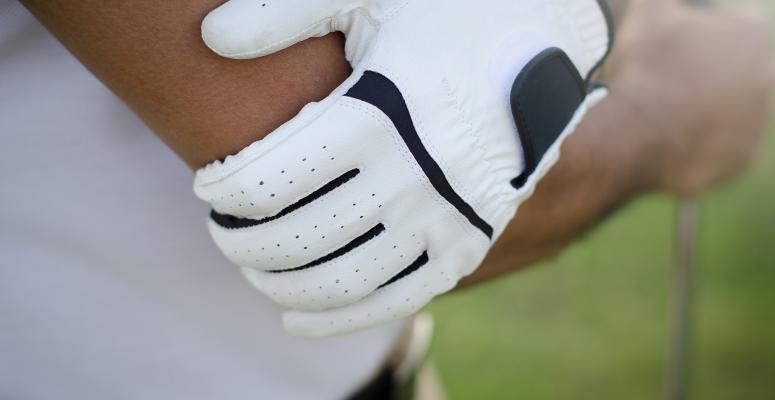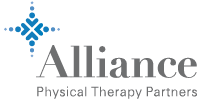
Golf is more than just a sport; it’s a passion, a way to unwind and a chance to challenge yourself. But if you’re struggling with golfer’s elbow, or medial epicondylitis, it can put a damper on your game. You don’t need to worry, though. There are ways to help you manage the pain and get back to enjoying your time on the golf course. Here’s how you can navigate playing golf with golfer’s elbow and find your way back to swinging with confidence and better ease.
What is golfer’s elbow?
Golfer’s elbow is a condition that affects the tendons on the inside of your elbow. It’s similar to tennis elbow but occurs on the opposite side of the elbow. It affects less than 1% of the population. While it’s called golfer’s elbow, it’s not limited to just golfers. It can affect people who do other activities that involve repetitive arm movements, such as tennis, baseball or even typing. This condition is caused by:
- Overuse — Repeatedly gripping and swinging a golf club or other objects can put excessive strain on the tendons and muscles in the forearms.
- Poor technique — Using incorrect form or improper equipment can increase the stress on the elbow joint.
- Weak forearm muscles — Weak muscles in the forearm may not be able to adequately support the elbow joint during repetitive movements.
- Tight muscles — Tight muscles in the forearm, wrist or hand can contribute to golfer’s elbow.
- Sudden increase in activity — Increasing the intensity or frequency of your golfing or other activities too quickly can strain the elbow joint.
- Underlying medical conditions — Conditions such as arthritis or nerve disorders can increase your risk of golfer’s elbow.
Understanding the symptoms
Before diving into how to manage golfer’s elbow on and off the course, it’s essential to recognize its symptoms:
- Pain — A dull or sharp pain on the inside of the elbow, often near the bony bump
- Tenderness — Elbow area feeling tender to the touch
- Weakness — Difficulty gripping or holding objects
- Numbness or tingling — Sensation loss in the forearm or hand
- Stiffness — Stiff elbow, particularly in the morning or after activity
- Painful activities — Pain that worsens when doing activities that involve gripping, twisting or lifting
If you’re experiencing any of these symptoms, it’s important to see a health care provider for a proper diagnosis and treatment plan. Early intervention can help prevent the condition from getting worse and improve your recovery time.
Managing golfer’s elbow on and off the course
With proper management, you can minimize your discomfort. Here are some strategies to help you manage golfer’s elbow both on and off the course.
Strategies you can use on the golf course to help manage golfer’s elbow include:
- Modify your grip — A relaxed grip on your clubs can help reduce stress on your elbow. Experiment with different grip pressures to find what feels comfortable for you.
- Check your swing — Make sure your swing is efficient and balanced. Working with a golf coach can help you identify and correct any biomechanical issues. They can help make sure your swing is smoother and more controlled instead of powerful and forceful to help minimize strain on your elbow.
- Use the right equipment — Your clubs need to be the right size and weight for you. Using the right equipment can help prevent strain on your elbow. Clubs with a softer grip or more flexible shaft can help reduce impact on your elbow.
- Take it slow — If you’re dealing with golfer’s elbow, it’s important to ease back into golfing. Start with shorter practice sessions and avoid heavy swings that can make your pain worse.
- Warm up and cool down — While golf appears to be a relaxed and slow-paced activity, it’s still crucial to warm up and cool down. Before you play, do a thorough warmup that involves stretching. After your round, make sure you do some additional stretching to help prevent stiffness.
Strategies you can use off the course to help manage golfer’s elbow include:
- Rest — Give your time to rest and recover. Applying ice to the affected area after you play can help reduce inflammation and pain. Using a heating pad on days when you’re not playing can help relax and loosen muscles. Be patient, as it can take up to six weeks for golfer’s elbow to heal.
- Medication — Taking over-the-counter nonsteroidal anti-inflammatory drugs (NSAIDs) like ibuprofen or naproxen can help ease symptoms.
- Physical therapy — A physical therapist can create a personalized treatment plan using exercises and treatments to address golfer’s elbow.
- Braces or supports — Wearing a brace or support can provide additional support to your elbow and help reduce strain.
If your golfer’s elbow symptoms continue despite trying these strategies, it’s crucial to consult a health care professional. A doctor or physical therapist can provide a thorough evaluation and recommend additional treatments. In some cases, they may suggest options like corticosteroid injections or advanced physical therapy techniques to address more severe cases of golfer’s elbow. Surgery may also be recommended if conservative treatments aren't enough.
Physical therapy for golfer’s elbow
Golfer’s elbow can be a frustrating condition, but physical therapy offers an effective way to help you recover and return to your favorite activity. Physical therapy techniques that can be used to treat golfer’s elbow include:
- Manual therapy — Manual therapy involves hands-on techniques that a physical therapist uses to help treat golfer’s elbow. It includes various methods like:
- Soft tissue mobilization — Your physical therapist will use their fingers and palms to apply firm but gentle pressure to the muscles and tendons that are tight or inflamed. This technique can help improve blood flow to the area, promote healing and decrease pain, making it easier for you to move your arm without discomfort.
- Joint mobilization — Joint mobilization for golfer’s elbow focuses on improving the movement and function of the elbow joint. Your physical therapist will apply gentle, controlled movements to your elbow to help increase its range of motion and reduce stiffness. It can help alleviate pain, improve joint function and address any limitations in movement caused by golfer’s elbow.
- Instrument-assisted soft tissue mobilization (IASTM) — IASTM is a technique where specially designed stainless steel tools are used to treat soft tissue. A specific IASTM technique is the Graston Technique®. This technique helps to detect and address areas of scar tissue and muscle tightness by your physical therapist using the tools to gently scrape the skin. By breaking down the scar tissue, the Graston Technique helps promote healing, reduce inflammation and improve circulation in the affected area. It can also reduce pain and enable your elbow to move more freely.
- Therapeutic exercises — Therapeutic exercises are specific movements and stretches to improve strength, flexibility and function in the affected area. Your physical therapist will create a tailored exercise program to help address your specific needs, which can include stretching, strengthening and range-of-motion exercises. These exercises are designed to help restore normal elbow joint movement, strengthen the muscles that support your elbow and prevent future injuries.
Alliance PTP can connect you with the physical therapy practice you need for golfer’s elbow treatment
Physical therapy is an effective option to treat golfer’s elbow. If you’re ready to try PT, you’ll find plenty of options to choose from among the Alliance Physical Therapy Partners practices nationwide.
Our team can quickly put you in touch with one of our partner clinics near you, and their friendly and knowledgeable local staff can help you find care for your golfer’s elbow. Don’t have the time to see a physical therapist in person? Not a problem. Alliance PTP and its partners can also see you virtually in nearly every state.
Still have questions about what we and our partners can do for you? We’re ready to answer them and help you find the physical therapy you need.
Get Help at a Location Near You
